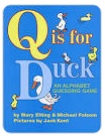

PS. Until we can educate the indifferent, unaware, uneducated parents how to provide learning experiences at home, some children will enter formal schooling behind as they step into the classroom.
More important than trying to drill the alphabet into the heads of pre-schoolers is to read to them daily.
Teaching the names and sounds of the alphabet before they enter kindergarten is not age appropriate. Teaching the alphabet should be integrated with teaching children to read. Learning the alphabet in isolation has no meaning and is a waste of time. Of course children are all different and have different skills, talents, and interests.
When my one grandson was in pre-school the teacher spent the year teaching the alphabet via various activities. When he entered kindergarten there was no recall of the letter names and sounds. He has a phenomenal imagination and vocabulary. He has a great memory for that which is meaningful to him. Teaching the alphabet to four year olds is not age appropriate.

Expand the knowledge of the alphabet by:
1. Start with Names Take a picture of each student in class via the digital or regular camera. Place their picture above the letter of the alphabet their name begins with. This will give them an anchor sound they can relate to. When possible connect a new sound to the a child’s name, name of a parent, some close relative, friend, favorite toy.
-
2.Letter each child's name on a flash card and/or chart (large enough for students to see from their seats). Place their names in alphabetical order in a pocket chart. Each day have a short activity with their names; e.g., find all the names that begin with a .... How many last names begin with... How many names have ... in their name? Use a colored marking pen for the first letter of their names. Talk about their names and children will begin to say, "Oh, m is in my name." "Yes, but it is not at the beginning..."

3. With the Morning Message use colored marking pens for all the words beginning with a certain letter, e.g.; m - circle them, outline, underline , etc.
-
4.Make a large alphabet chart; for each letter place a picture that begins with that sound. Each day have the children recite in unison:
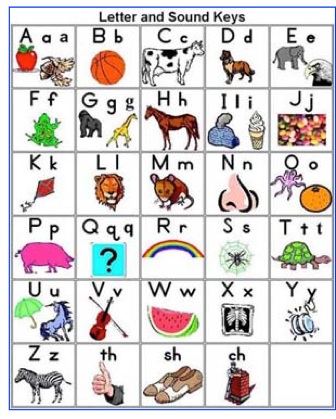
"A-a apple, B-b bicycle, C-c cat, D-d dog etc." The children say each letter twice - once for the capital and once of the small letter and then the picture. This will give them an anchor sound and word for future study.

(Click on titles)
-
5.Read and sing by Bill Martin,
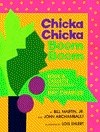

Leo Lionni's Apple Tree U Tube with Angelina Jean

The Alphabet Tree U tube

The Guinea Pig ABC
https://www.youtube.com/watch?v=LHUoGE_4juY

by Lilian Obligado,
https://www.youtube.com/watch?v=l97wcd83vuA

-
•Michael Rosen’s ABC by Mary
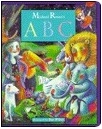
and Michael Folsom Elting.
by Mary Elting and Michael Folsom
https://www.youtube.com/watch?v=Yf1vJm8EARw
Cont. #6 on next column
“Twinkle, Twinkle, Little Star”/ ABC Song
by Mom Morin




ABC Teach
Direct teaching of the alphabet to pre K and K children is not age appropriate. Teaching the alphabet in isolation to four and five year olds is taking away valuable time which should be given to developing many other age appropriate skills. A connection between the child’s background and learning the alphabet is necessary to learn the alphabet in a meaningful way. Forcing pre K to recognize and memorize the names and sounds of the alphabet via direct instruction - unrelated to the children’s background - is a good way to destroy a love of learning just as it is beginning to blossom.
Nancy Carlsson-Paige, an early childhood devlopment expert states, “Naming letters and numbers is superficial and almost irrelevant in relation to the capacities we want to help children develop: self-regulation, problem solving ability, social and emotional competence, imagination, initiative, curiosity, original thinking — these capacities make or break success in school and life and they can’t be reduced to numbers.”
Pre school and kindergarten is a time to develop the imagination - not a time to tax their memory. It is a time to develop a love of learning via interesting stories, dramatizing and singing. It is a time to listen, respond, and interact with their classmates and teacher. It is a time for picture reading - not a time to memorize contrived sentences.

having tea with her
uncle- all pretend;
there isn’t even
water in the pitcher.
Later as a third grader
she writes
phenomenal fiction
besides being an avid
reader.
My grandsons love to use their imagination in acting out stories read to them. Developing the imagination is the most important higher order thinking skill according to Einstein. It is a skill which all great discoveries and inventions are built on. Common Core ignores the imagination.
When I ask my grandsons attending kindergarten what story his teacher read to the class or what song she/he sang and he doesn’t remember, I strongly suspect that a story was not read or a song sung. They have plenty of meaningless homework which steals quality time away from parents. To send home run-off black and white booklet to read at home is a waste of paper and time. There will be no meaningful carry over. Parents should be reading to children from books created for them by phenomenal children’s authors. We shouldn’t squelch their love of rhyme, adventure, and stories that tickle their funny bone by lying to them, which we do when we send home those 5 1/2 by 8 1/2 ditto black and white
booklets with contrived asinine sentences. We are telling them that is what reading is all about.
Kindergarten Skills Checklist:
Social, Motor, Reasonings & Concept Development, Language Skills...
Reading skills (No mention of having to know the alphabet names and sounds)
-
•Looks at books or pictures on their own
-
•Pretends to read books by reading the pictures
-
•Tries to read in everyday situations (signs, labels, etc.)
-
•Recognizes rhyming words
-
•Recognizes some common words in print
-
•Recognizes many uppercase and lowercase letters
-
•Recognizes some letter sounds
-
•Describes characters’ actions and feelings in a story
-
•Relates stories to personal experiences
-
•Puts events of a story in order
“ Dr. Carlsson-Paige who is professor emerita at Lesley University, where she taught for 30 years, states ‘...the direct instruction is replacing proven techniques that early childhood education experts advocate.’
‘The direct instruction has replaced hands on, active learning and play, which really are the bedrock, or cornerstone activities of early childhood that really solidify learning," Carlsson-Paige explained. "Children learn through active engagement and play in the early years. Skilled teachers know how to connect skills appropriately to play as they see what children are doing and where they are on the developmental spectrum.’
‘The direct instruction is damaging to children, she said, because it encourages children to believe that "the information is outside of themselves, rather than they have a capacity construct it from within.’
‘All of these messages are very damaging. Many children are feeling a sense of failure in early classrooms because they are being asked to learn things they can't understand easily and they can't make sense of....’ ”
Of course we have gifted children but the class can not be geared to advancing the gifted.
Mrs. Tapogna’s Kindergarten Classroom- Retired




























10. Have the children learn to write the letter as you teach the sound. Have them trace the letter on their desk, arm, back of their neighbor, on a piece of screen, with a marking pen on a white board...
-
11.When writing a whole-class, interactive story give a student a colored marking pen to either write the first letter of words beginning with m or write the entire word on the chart.
12. At the writing table have the students draw a picture or illustrate a story. Have them then write the letter that each object in the picture begins with either on top the objects or next to them.
13. Cut apart a big purchased chart, use clip art, or draw your own pictures for the next activity. Match pictures to the letters. You may want to give help in pairing by making the sets into puzzles. For extra help you may give them matching colored background.
14. Graph and sort matching letters. After the children know five letters, put the letters in large bold print at the top of a workable, individual chart. Have 25 corresponding pictures - 5 pictures for each sound. The children have to place the pictures under the corresponding letters.
15. Sing a well known song and change the words, e.g., to the tune of "If Your Happy and You Know It Clap Your Hand." If you have a m word(or whatever letter you are studying ) share it now. (2 x) If you have a m word and you think it should be heard, If you have a m word, share it now..." Use it in conjunction with the word wall.
l6. Recite Tongue Twisters: e.g. Minny murtles miptoe in mall mulips. Tiny turtles tiptoe in tall tulips.
17. Read I Unpacked My Grandmother's Trunk by Susan Ramsy Hoguet. Then play the game "Going to Grandma's House." You have to pack the suitcase with objects beginning with e.g. m.
18. Associate food with the letters. For the letter e.g. m make a large open m and fill it with marshmallows. At snack time they can have clean ones to eat. ( For p they can use popcorn. Use other non edible material also; peas for p, sand for s, buttons for b.)
19. Display a set of 4 or 5 pictures beginning with e.g., m and one not beginning with an m. Have them spy the picture that does not belong. Then orally give words and ask which doesn't belong. After they hear the initial consonant have the listen for the ending consonants and then finally ask them to listen for the middle consonant. Don't teach the letters in alphabetical order but study the easy ones first - s, m, t, etc. To reiterate:they do not have to know the alphabet before they start to read.
20.Phonics Any Time by Denise Fitzsimmons For every letter they have, have a rhyme and an activity for the students. Suggestions are given to the teacher for other activities such as Tongue Twisters and other oral activities, games, writing activities and different phonetic manipulative activities.
For every letter of the alphabet there are umpteen stories, poems, songs, nursery rhymes, and games to play and stories to be written. Learning should be fun; not a boring drill.
"Two Little Apples"
Two little apples, hanging in a tree
Two little apples, smiling at me
I shook that tree as hard as I could
And DOWN came the apples
Mmm, Mmm good
by Mary DeFalco
(cont. from left column)
6. Introduce individual sounds with poems and stories, e.g., for the sound of m tell the story of the Mitten Story. Caps for Sale is another good story for m. U Tube
-
★The Mitten Story Craft/Enchanted Learning
As you tell the story have the characters enter a large mitten.
Sing songs such as "I Love Mud" by Rick Charette
“Mary Wore a Red Dress” song on UTube
and act it out.
Recite the poem: “I Think Mice Are Rather Nice." Hold a mouse as you sing it.
Recite "Two Little Apples ;" the last line give the sound of m. Jan Brett’s Animals ;you can copy her animals.
7. Introduce a new sound with a nursery rhyme. For m "Mary Had a Little Lamb," "Little Miss Muffet" (Picture and activities for a week), and "Mary, Mary Quite Contrary." Enlarge a nursery rhyme or poem and have the children circle all the words beginning with m.
8. Have the children form m words with magnetic letters: my, me, make, made. As you stretch out the word have them pull the corresponding letter down on their magnetic board as they hear it. Vary the approach using a sound board and tokens. As you show a picture and pronounce it, they have to put down as many tokens as they hear sounds. As you pronounce the word again, they pull the token down and slide it into the appropriate box.
9. Create alphabet big books; Read many ABC books.
Make m (or whatever letter you are working with) pictures out of clay.
Handwriting Guides
Songs for Each Letter:
D Hey Diddle Diddle
E Encey Weecy Spider
F Punchenello Funny Fellow
G Hunting We Will Go
H Humpty Dumpty
I Ice Cream You Scream
J Jim Along Josie
K Kookaburra
L Mary Had a Little Lamb
N I Had a Little Nut Tree
O Over the Meadow
P Paw Paw Patch
Q Quack, Quack Little Duck
R Row Row Your Boat
S Sing a Song of Six Pence
T I’m a Little Tea Pot
U Riding Through the USA
V Valentines Are Very Nice
W Working on the Railroad
x Is an Xray

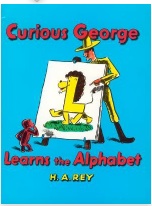

-Bruno Munari’s ABC conversations about letters and sounds facilitated by illustrations
-Puddle’s ABC-emphasizes letter sounds
-Curious George Learns the Alphabet presents in the context of a story,

Listen for something Sara saw on the train to Maine”
Give each child a letter to listen for or what they see.
-
✤
★Luca with His ABC’s U Tube
Up dated 9/6/24








